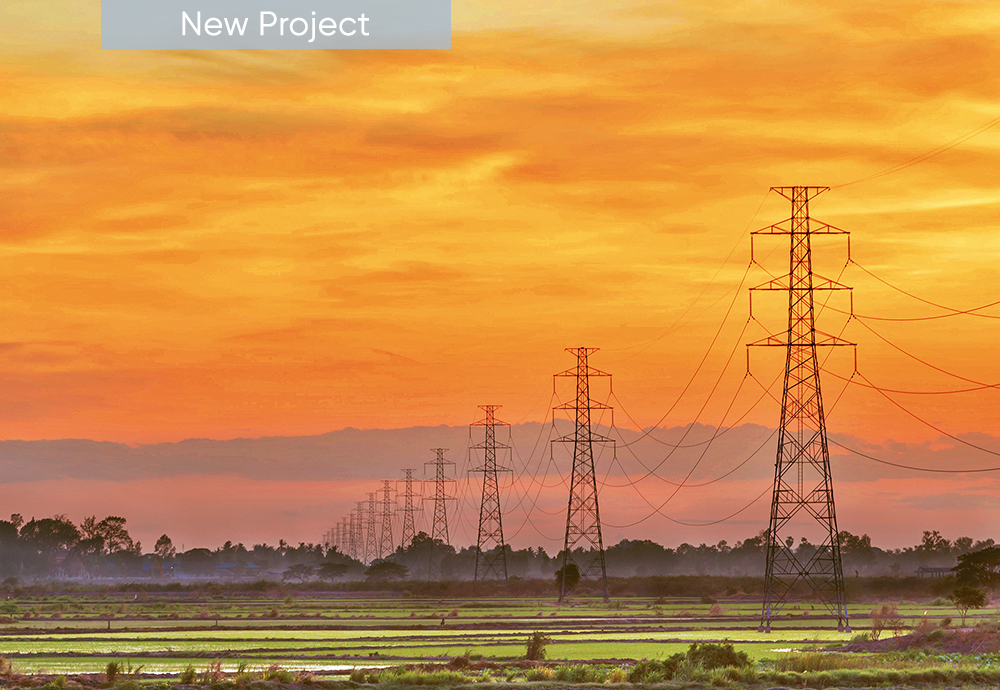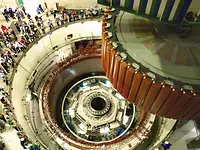Affordable energy for generations - Jebba, Nigeria
Stabilizing the grid as India embraces renewables
Gandhi Sagar, India
With India’s energy scenario changing rapidly to include large volumes of renewable energy like solar and wind, the need for energy storage has come to the fore. Storage capacity helps to maintain a stable grid as variable output renewable capacity increases. Pumped storage plants are already well-proven as the most sustainable source of energy storage and India is building a number of large pumped storge plants.

With this paradigm shift on the energy scene, leading renewable energy company Greenko led the implementation of the world’s first fully integrated renewable energy storage project – the 1,680 MW Pinnapuram pumped storage plant in Andhra Pradesh.
Putting their trust in us, Greenko awarded ANDRITZ the electro-mechanical works for the Pinnapuram PSP in October 2020. Our operational excellence on the Pinnapuram project prompted Greenko to award ANDRITZ a second pumped storage contract for the electro-mechanical works on their 1,440 MW (expandable to 1,680 MW) Gandhi Sagar Pumped Storage Plant.
Greenko already has a net installed capacity of 7.5 GW of renewables across 15 states in India. With their ambitious plans to replace fossil fuels with integrated decarbonized energy and grid assets, Greenko has now commenced the construction works on three pumped storage projects to date – the Pinnapuram and Saundatti integrated renewable energy storage projects (IRESP), and the Gandhi Sagar standalone pumped storage plant. Greenko has a license to build and operate IRESPs across five states, maximizing the available power of solar and wind resources with digitally connected storage infrastructure to provide scheduled and flexible power to the grid.
The Project

Visit of the ANDRITZ delegation to the Pinnapuram pumped storage site, which is also being developed by Greenko and for which ANDRITZ is supplying electro-mechanical equipment.
Gandhi Sagar Pumped Storage Project is located in the state of Madhya Pradesh, India, and will be developed in a single phase. The hydropower project consists of five fixed-speed turbines of 240 MW each (expandable to an additional unit of 240 MW) and two fixed-speed turbines of 120 MW each. It is expected to enter into commercial operation in 2025, when the project will generate over 8,000 GWh of electricity annually. The design life of the facility is some 50 years of operations from the commercial operation date.
Gandhi Sagar PSP will consist of an upper reservoir located in the village of Rampura Taluk in Khemla block, Neemach district, and the lower Gandhi Sagar reservoir located near Gandhi Sagar village in Mandsaur district. The Gandhi Sagar reservoir has a gross storage capacity of 7,320 million m3 while the upper reservoir has been proposed with a live storage capacity of approximately 30 million m3.
Initially, two layouts were studied. The first option was to go with a surface powerhouse. The alternative was to have an underground powerhouse along with an upper reservoir, intake structure, pressure shaft, tail race tunnel, tail race outlet and a tail race channel. After further investigation, it was decided to go for a surface powerhouse.
The electro-mechanical equipment to be supplied by ANDRITZ consists of the main inlet valves (MIVs) and their associated equipment, pump turbines, motor generators, governors, static excitation systems, static frequency converter (SFC), and starting bus system connecting to all fixed machines with isolators. The scope also includes mandatory spares and a list of recommended spares, which are required for five years of trouble-free operation.
The PSP will also involve the construction of a rockfill dam with a sufficient embankment height to create the upper reservoir. Eight independent penstocks will draw from the intake structure located in the upper reservoir which is provided with trash racks and gates. A surface powerhouse will be equipped with eight vertical reversible Francis-type units, each composed of a motor generator and a pump turbine.

City of Bhopal at night
The eight penstocks will carry water from the reservoir to the turbines inside the power station. Each penstock will be approximately 621 m long with a diameter of 7 m. The main inlet valves for the large units will have a diameter of 5.3 m while the ones for the smaller units will have a diameter of 3.8 m. These valves will be completely designed and manufactured in ANDRITZ’ Indian location in Prithla. The design means that it will be possible to start all the units simultaneously as the water systems are independent for each unit. All the auxiliary systems of the plant will therefore also be designed to support this requirement.
With a design discharge of 1,574 m3 per second, the installed capacity of the pumped storage scheme was influenced by the requirements of daily peaking power, flexibility in efficient operation of the units, the storage capacity available in the upper reservoir and the area’s capacity characteristics. Power from the project will be evacuated through 400 kV moose double circuit transmission lines to Chittorgarh.
The operation of the pumped storage plant in both generation and pump mode will be determined by the Load Dispatch Center. Depending on the particular power requirements or availability, the plant is to be operated either at part load in generator mode, or full load both in generator and motor mode, or in hydraulic short-circuit mode (meaning one unit is run in generator and the other in motor mode to generate/consume required power), or in condenser mode to keep the machines ready and cater for various loads or to support reactive power compensation.
"The black-start capabilities and reactive power compensation available from the Gandhi Sagar units are essential for grid support."
Active grid support will be provided, including reactive power compensation, frequency response in both free governor mode operation (FGMO) and restricted governor mode operation (RGMO), electrical inertia, black start and line charging modes for synchronous (fixed speed) machines.
ANDRITZ is immensely proud to be part of this amazing hydropower project and to continue our excellent cooperative relationship with Greenko to develop sustainable clean energy for the Indian people.
Benefits of pumped storage
- Best-proven, low-risk technology
- Balances volatile renewable energy generation with demand
- Manages grid bottlenecks
- Supports grid stability by virtue of a quick response to changing demand or sudden outages
- Contributes to grid stability by increasing grid inertia and providing black start capability
- Very long facility lifetime
Technical Details
Gandhi Sagar
Total output: | 1,440 MW (expandable to 1,680 MW) | |
Scope: | 5 × 240 MW (expandable to 1 additional unit) / 2 × 120 MW | |
Head: | 122.03 m / 121.23 m | |
Voltage: | 11 kV / 18 kV | |
Speed: | 187.5 rpm / 272.72 rpm | |
Av. annual energy production: | 8,000 GWh |

Author: Neelav De Samrat




